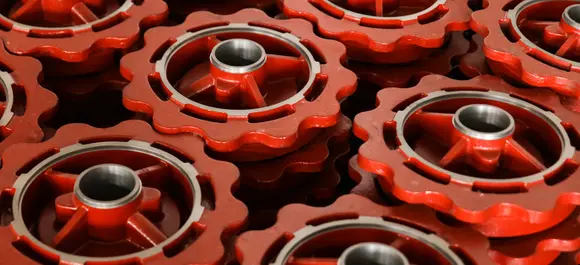Mobile:+86-311-808-126-83
Email:info@ydcastings.com
Techniques and Applications for Brazing Cast Iron in Modern Manufacturing Processes
Brazing Cast Iron Techniques, Challenges, and Applications
Brazing cast iron is a specialized technique that has gained traction in various industries due to its ability to join dissimilar metals and enhance structural integrity. This process involves the melting of a filler metal above 450°C (842°F) and the subsequent bonding of two or more pieces of cast iron without the use of fusion, making it a preferred method for repairing complex components. In this article, we delve into the techniques, challenges, and applications associated with brazing cast iron.
Understanding the Brazing Process
Brazing is distinct from welding in that it does not involve melting the base metals. Instead, a filler metal, which has a lower melting point than that of the base materials, is used to create a joint. The process typically involves cleaning the surfaces to be joined, applying a flux to prevent oxidation, heating the assembly to the appropriate temperature, and then introducing the filler metal. The capillary action draws the molten filler into the joint, creating a robust bond upon cooling.
When brazing cast iron, several filler metals can be employed, including copper-silver alloys, nickel-based alloys, and bronze. Each type serves specific requirements in terms of strength, ductility, and corrosion resistance. Choosing the right filler is crucial for achieving a long-lasting joint, particularly in applications that may be subject to extreme conditions.
Techniques for Brazing Cast Iron
1. Preparation Proper surface preparation is essential for a successful brazing operation. The surfaces must be free of contaminants such as grease, rust, or paint. Mechanical cleaning methods, like grinding or sandblasting, can be employed to achieve optimal surface conditions.
2. Heating The heating method is critical in the brazing process. Torch brazing, furnace brazing, and induction brazing are all viable options depending on the complexity and size of the components being joined. Controlled heating ensures that the cast iron is heated uniformly, reducing the risk of thermal shock and warping.
brazing cast iron

3. Flux Application Flux plays a vital role in the brazing process. It prevents oxidation of the filler metal and promotes wetting, facilitating better adhesion between surfaces. Proper application of flux is essential, as insufficient flux can lead to joint weakness and failure.
4. Cooling After the filler metal has been introduced and the joint formed, controlled cooling is required to avoid cracking. Rapid cooling can induce thermal stresses in cast iron, particularly in high-carbon types, leading to brittle failures.
Challenges in Brazing Cast Iron
Despite its advantages, brazing cast iron presents certain challenges. One significant issue is the inherent brittleness of some types of cast iron, particularly white cast iron, which can lead to cracking during the heating or cooling stages. Moreover, the presence of graphite in gray cast iron can complicate bonding, as the graphite can inhibit the flow of filler metal.
Another challenge lies in the thermal expansion differences between the filler metal and cast iron, which can introduce stress at the joint. Achieving an optimal balance between heating and cooling rates is critical to minimizing these stresses.
Applications of Brazed Cast Iron
Brazing cast iron has a wide range of applications, particularly in the automotive, aerospace, and manufacturing industries. It is commonly employed for repairing cracked engine blocks, exhaust manifolds, and other high-stress components. Additionally, brazing is beneficial in the production of complex structures where traditional welding may not be feasible due to geometrical constraints.
In summary, brazing cast iron is a robust method for creating strong, durable joints in various applications. While it presents unique challenges, through careful preparation, technique selection, and quality control, many of these obstacles can be overcome. As industries continue to seek effective repair methods to prolong the lifespan of components, brazing is likely to remain a vital technique in the metallurgical toolbox.
-
Why Should You Invest in Superior Pump Castings for Your Equipment?NewsJun.09,2025
-
Unlock Performance Potential with Stainless Impellers and Aluminum End CapsNewsJun.09,2025
-
Revolutionize Your Machinery with Superior Cast Iron and Aluminum ComponentsNewsJun.09,2025
-
Revolutionize Fluid Dynamics with Premium Pump ComponentsNewsJun.09,2025
-
Optimizing Industrial Systems with Essential Valve ComponentsNewsJun.09,2025
-
Elevate Grid Efficiency with High-Precision Power CastingsNewsJun.09,2025











